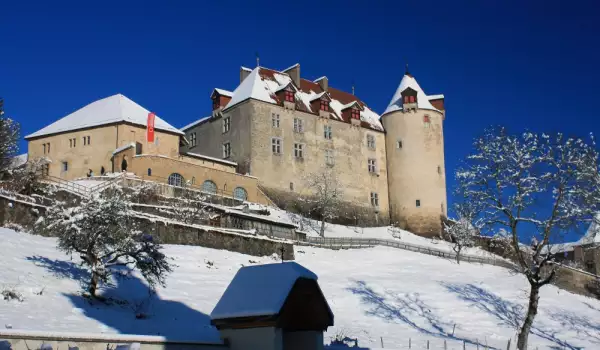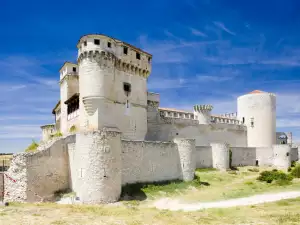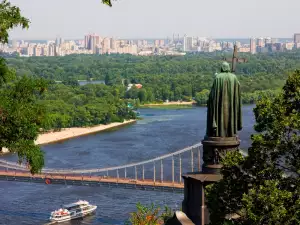Gruyere Castle

Gruyere Castle is the emblem of the historic town of Gruyere, Switzerland, which until now has managed to preserve the medieval town atmosphere. Extremely beautiful and impressive the castle dominates the surrounding area and the Saanen Valley from its highest peak.
The town of Gruyere is in the Swiss canton of Fribourg and is also known by the German name Greyerz. The castle can be reached on the A12 motorway exit at Bulle. The town and fortress is located about 35 kilometers from the district town of Fribourg and 40 kilometers from Vevey. In the town and the castle you cannot use a car , instead you should leave your car in the parking lot at the entrance, which is located approximately 500 meters from Gruyere Castle.
The town and its attractive medieval fortress lir in the middle of the Fribourg Alps green foothills. Gruyere Castle is considered one of the best preserved, beautiful and authentic in Switzerland. The sight of towering castle towers over the old town is a view that is difficult to describe.
Tour of the castle itself today is a kind of lecture on architecture, history and culture for the past 800 years. The castle dates from the 13th century, and currently is an interesting regional museum, which tells the history, traditions and manners in the construction of this Swiss region. Also various temporary exhibitions are held, which tells in pictures the past history of the castle.

In 13th century the castle was home to many of the Counts of Gruyere. Michel, which was the last family, was facing financial difficulties and in 1554 declared bankruptcy. Creditors of the town of Fribourg and Bern shared the land and property among themselves, and in 1555-1798 the castle was used as headquarters of the Fribourg bailiff.
By 1848 Gruyere Castle served as a residence of local prefects. One year later the palace was released and became the property of the families Bovy and Balland. These two families ever spent summers at the castle and dealt intensively with its restoration, with help of their fellow artists and painters. In 1938 the State Board of Fribourg bought the castle and operated it as a museum.















